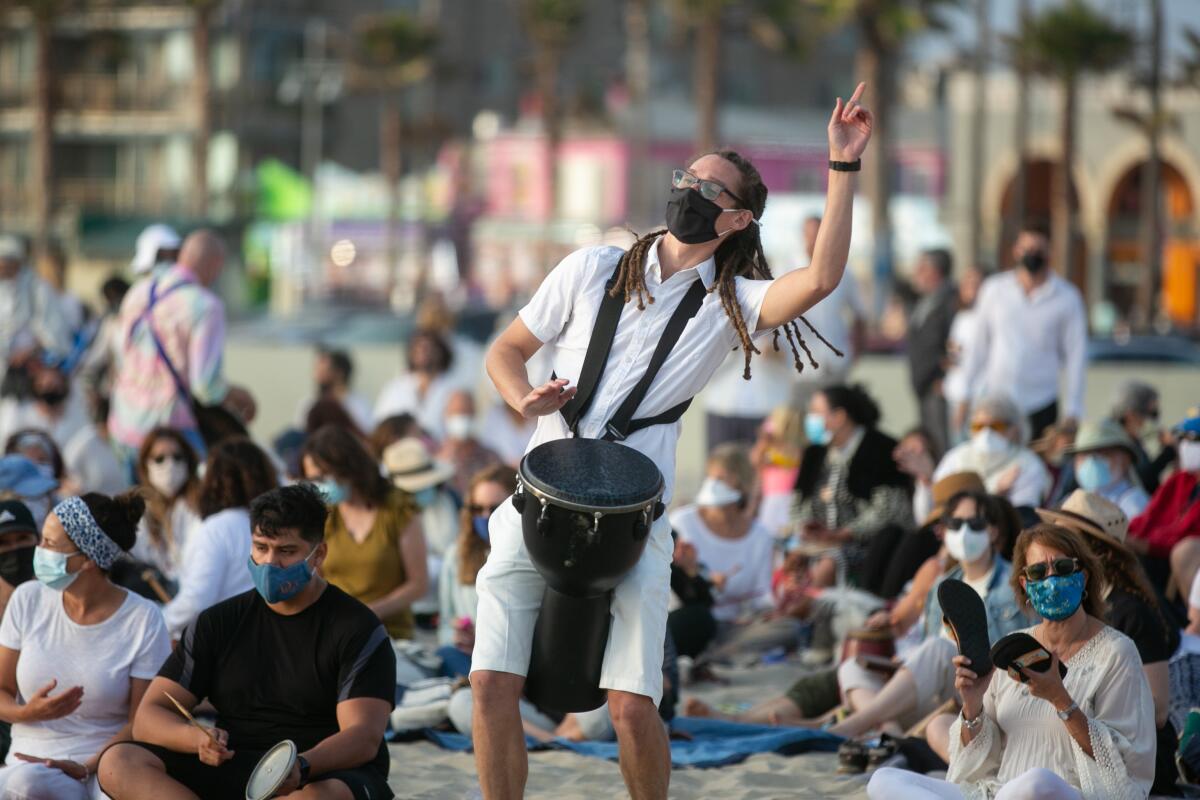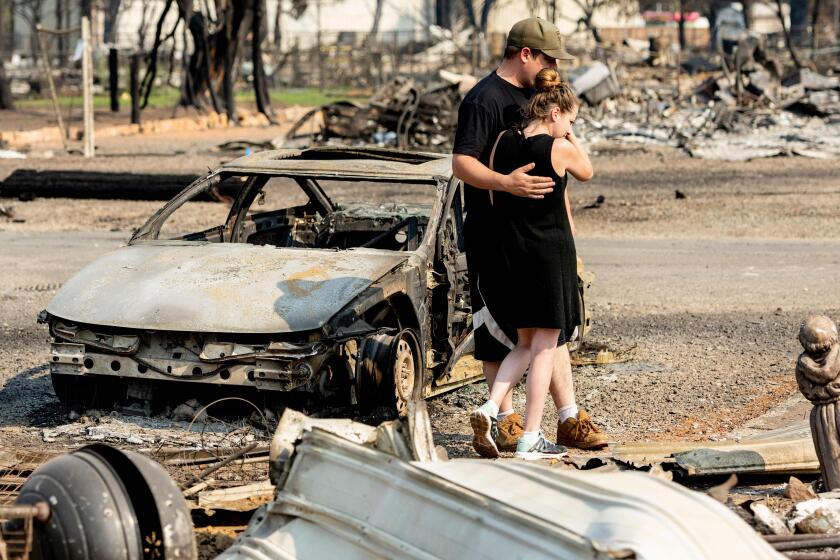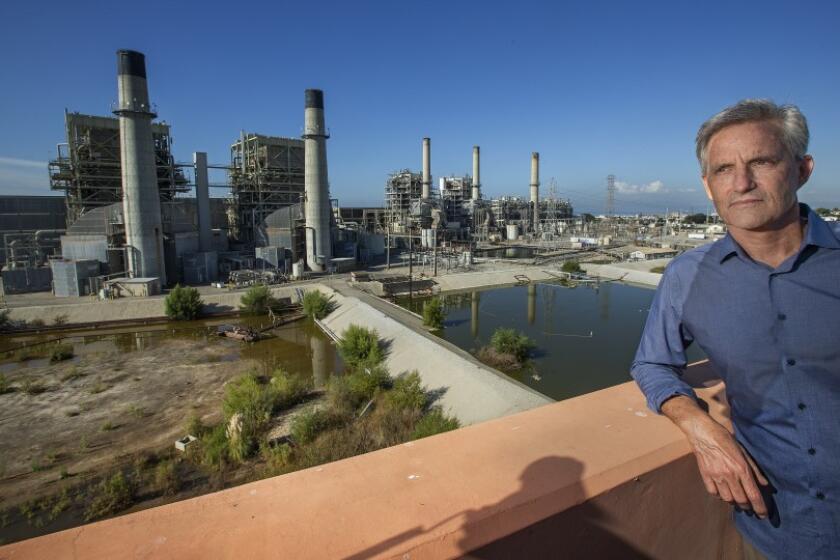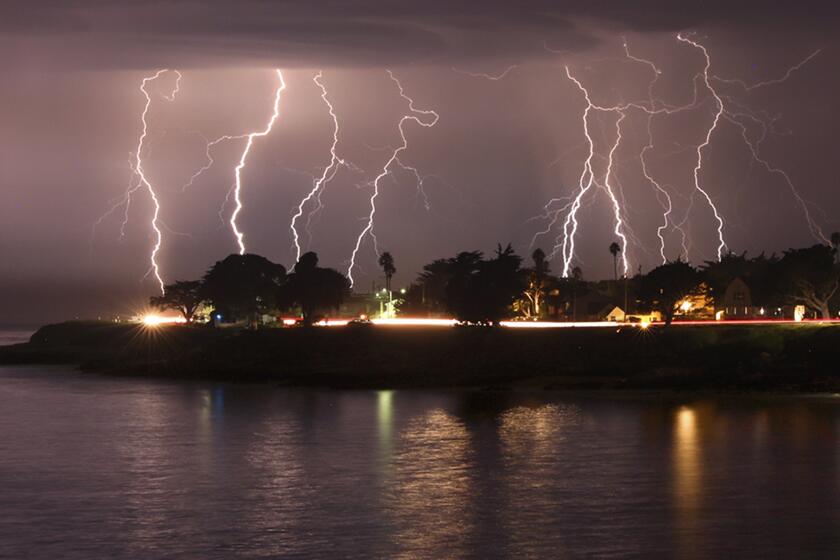California records its hottest summer ever as climate change roils cities

California and several other Western states endured the hottest summer on record, according to federal data released Thursday, underscoring the ways rapid climate change is unleashing unprecedented wildfires, deadly heat waves and drought conditions.
In addition to California, officials said Idaho, Nevada, Oregon and Utah also set all-time heat records for the meteorological summer, spanning June through August. Sixteen other states also saw a top-five warmest summer on record, according to the National Oceanic and Atmospheric Administration, which issued its findings Thursday.
Nationwide, the stretch from June to August tied with the 1936 Dust Bowl summer as the hottest on record, with temperatures across the country averaging 2.6 degrees above average.
“We’re right smack in the middle of wildfire peak season,” Cal Fire Chief Thom Porter said. The outlook for the rest of the year includes more heat and dryness.
Rising temperatures have been a common denominator in a summer of ecological crises across the West.
A heat wave that blanketed the Pacific Northwest in June claimed the lives of hundreds, including immigrant farmworkers and the elderly. An estimated 1 billion sea creatures died because of heat off the coast, and the Sacramento River is facing a “near-complete loss” of young Chinook salmon because of abnormally warm waters.
The searing heat dried the state’s landscape and helped pave the way for more than 2 million acres to burn, with officials fearing the worst is yet to come. The blazes sent scores of residents fleeing from their homes and choked countless others with lung-burning smoke.
Just this week, Lancaster saw its 58th day of the year with temperatures above 100 degrees — breaking a record from 2003. Fresno broke its record with 64 triple-digit days. On Wednesday, record temperatures for Sept. 8 were registered in Palmdale, Sandberg and Paso Robles, where highs reached 106, 95 and 106 degrees, respectively, the National Weather Service said.
“All these records are being broken, and broken in quick succession,” said Karen McKinnon, an assistant professor at the UCLA Institute of the Environment and Sustainability, “and that’s basically indicative of this trend that is largely due to climate change.”
“We’re right smack in the middle of wildfire peak season,” Cal Fire Chief Thom Porter said. The outlook for the rest of the year includes more heat and dryness.
The grim conditions of the Dust Bowl years were more of an outlier, McKinnon said, while the latest extremes belong to a larger warming trend. In fact, she said, the summer of 2021 was even hotter than mere extrapolation would suggest, leading some to question whether that warming is accelerating.
Alan Barreca, an environmental economist at UCLA, said the record summer months were not surprising given the “fairly steady increase in temperatures in California and throughout the world” — but they are concerning.
Extreme heat is among the deadliest of natural disasters, he said, and soaring temperatures often disproportionately affect the most vulnerable, including pregnant women and infants, elderly people, homeless people, and residents of low-income neighborhoods.
Extreme heat is also worrisome because it expands the necessity for and reliance on air conditioning — which not only furthers inequality but also feeds into the climate-change system that is driving temperatures up.
“Air conditioners seem to be an absolute necessity going into the end of the 21st century,” Barreca said. “We’re going to need them, and we’re going to also need to be cutting back on our emissions.”
The Redondo Beach fight is a microcosm of the climate change challenges confronting the state.
Conditions have already become so dire that the California Independent System Operator, which runs most of the state’s power grid, on Tuesday asked the federal government to declare an “electric reliability emergency” that would allow six natural gas-fired power plants — including facilities in Huntington Beach and Long Beach — to generate power at maximum levels, even if they violate air pollution limits.
It‘s a scrambling effort by state officials to reduce the risk of rolling blackouts in the face of increased energy demands by adding new electricity supplies, including fossil-fuel resources that contribute to climate change and worsening heat waves — a short-term sacrifice that has proved controversial among clean energy groups.
The grid operator was granted a similar request during a heat wave last September, but only for a week. This time, the agency is asking for 60 days — a sign that it expects extreme heat could continue well into the fall. The ISO has already issued two flex alerts this week, which call on residents to conserve energy from 4 to 9 p.m., when net demand is typically at its peak.
But even as the energy grid groans, heat advisories and storm-system warnings are promising to bring more dangers to the state’s residents in the form of increased fire weather. More than a dozen active wildfires are burning across California, and officials fear that added heat, dryness and the potential for dry lightning could make conflagrations worse or even ignite new ones.
The National Weather Service is forecasting very hot and dry conditions in Southern California through Friday, with temperatures in some areas expected to be 5 to 15 degrees warmer than normal. The Antelope Valley area could see daytime temperatures as high as 108 degrees, while Los Angeles will climb into the 90s Friday and Saturday.
A heat advisory also has been issued across the Inland Empire, the Santa Ana Mountains and portions of San Bernardino and Riverside counties through Friday. Residents are advised to seek shade, stay hydrated and avoid any activity that could spark a fire.
In several areas across the state, the possibility of thunderstorms could bring erratic winds, flash flooding and the “potential for lightning-caused wildfires,” officials said.
“It’s all a concern,” said David Sweet, a meteorologist with the weather service in Oxnard. “If a lightning strike starts a fire, then the gusty winds could push it quickly. And aside from thunderstorm activities, it’s going to be pretty warm and dry. ... So with the heat, with any gusty winds — elevated fire danger.”
Many of California’s largest wildfires have been started by dry lightning strikes
But the maximum threat remains in Northern California, where beleaguered fire crews are still battling the 927,000-acre, multicounty Dixie fire and the 217,000-acre Caldor fire burning near South Lake Tahoe.
“We’re right smack in the middle of wildfire peak season,” Chief Thom Porter of the California Department of Forestry and Fire Protection said this week. “Everybody needs to remain vigilant.”
The National Weather Service said much of the fire zone, including Plumas and Lassen counties and the South Lake Tahoe area, will be hit with gusty winds and the chance of thunderstorms Friday, although a cooling trend should bring temperatures down in the days to come.
Dry lightning strikes — which last year spurred a rash of wildfires in the fall — are a possibility. A fire weather watch has been issued across much of Northern California through 11 p.m. Friday.
While the fires have forced thousands to flee their homes, they have driven many others to stay indoors with their windows shut against the toxic smoke. Barreca, of UCLA, said that could be a deadly pattern for people without air conditioning during a heat wave.
And McKinnon noted that the extreme weather behaviors plaguing the state — including fire, heat and drought — are all connected. The stagnant high-pressure system that created many of the summer’s “heat domes” are also associated with low precipitation and heating of the state’s surface.
“The warming of temperatures overall can lead to drying, and that drying later in the season can lead to warming, and all of those things can lead to enhanced wildfire,” she said. “Basically, it’s all linked.”
Times staff writer Sammy Roth contributed to this report.
More to Read
Sign up for Essential California
The most important California stories and recommendations in your inbox every morning.
You may occasionally receive promotional content from the Los Angeles Times.














